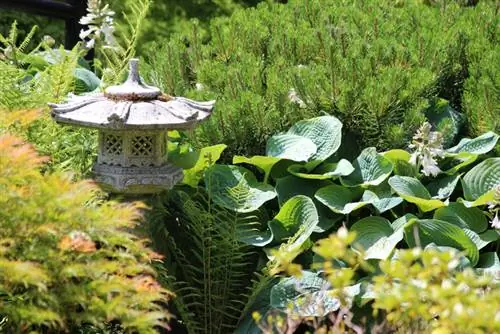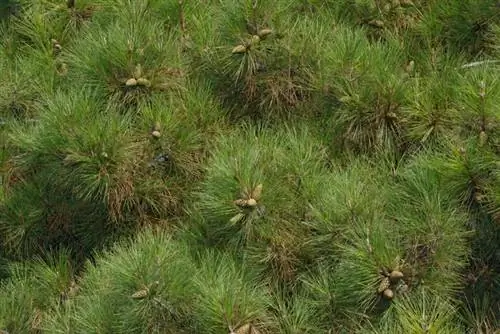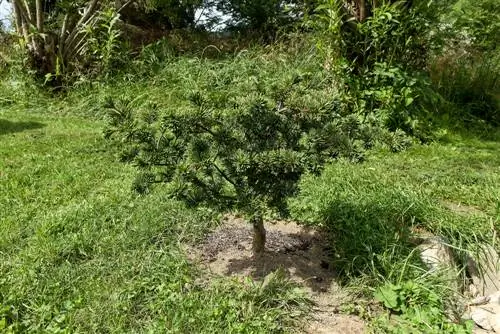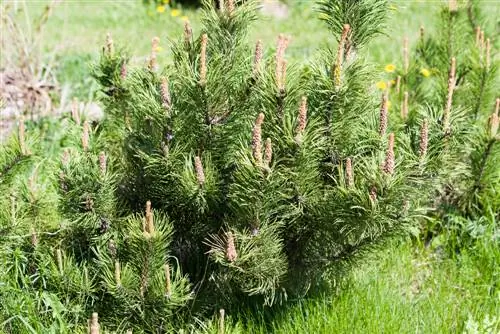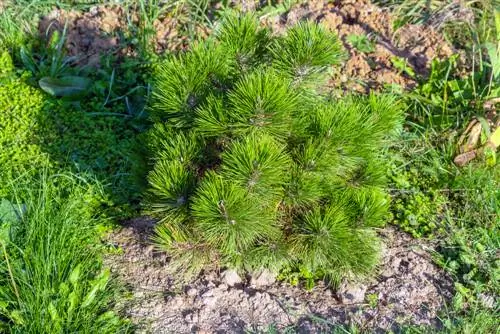- Author admin [email protected].
- Public 2023-12-16 16:46.
- Last modified 2025-01-23 11:20.
The mountain pine impressively demonstrates its status as an indestructible conifer, not least when it comes to pruning. Keeping a Pinus mugo in shape with scissors is not a challenge even for inexperienced hobby gardeners. Read here when and how to properly cut the robust mountain pine.

How do I cut a mountain pine correctly?
To properly prune a mountain pine, you should remove dead wood at the base in May or June, when the weather is overcast, cut back the growth of shoots (candles) by half or alternatively break off the candles by hand. This promotes bushy growth.
Best time is in spring
With a growth rate of a leisurely 5 to 15 cm, the mountain pine does not require pruning every year. In order to keep the tree compact and encourage it to develop a bushy habit, scissors (€14.00 at Amazon) should be used at least every 2 to 3 years. The best time for this measure is during the months of May and June, when the weather is overcast.
Tips for the ideal cut
Although a mountain pine is easy to cut, initial mistakes only grow out very slowly. If you follow our tips for professional pruning, your Pinus mugo will always look like it's been peeled:
- In May/June, thin the tree thoroughly by cutting off all dead wood at the base
- Then cut off the growth of the shoots (candles) by half
- Alternatively, break the candles in the middle by hand
The high pruning tolerance of a mountain pine also allows a deeper pruning of up to two thirds. This is often necessary if the tree thrives on a gravesite or in a pot. If you want faster growth while maintaining a dense, bushy appearance, shorten the candles by just a third in early summer.
Tip
The mountain pine grows in almost all locations where it is deeply anchored in the ground with its powerful roots. This property in particular qualifies the pioneer tree to stabilize slopes and embankments and at the same time to provide decorative greenery. The Humpy variety fulfills this task brilliantly, as it more than doubles its height of a maximum of 50 cm in width.

